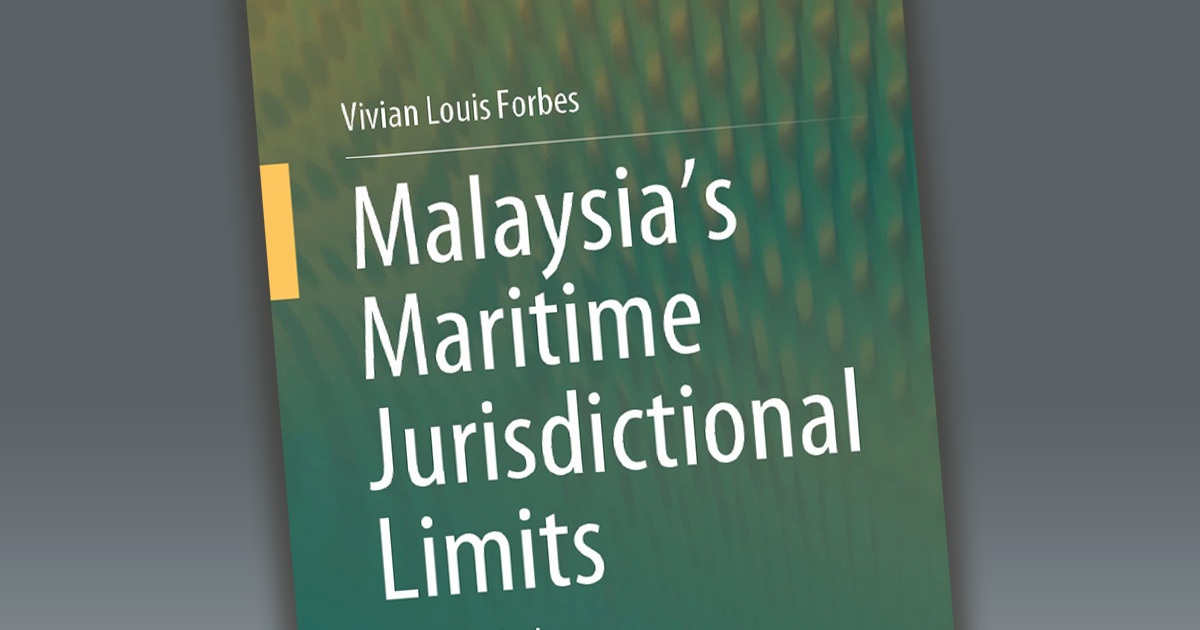PROFESSOR Dr Vivian L. Forbes from Australia makes a timely and valuable contribution to the study of Malaysia’s maritime boundaries through her book – Malaysia’s Maritime Jurisdictional Limits – An Appraisal.
Rich with detailed maps and accurate geographical data, it offers clarity on an issue that lies at the heart of the nation’s sovereignty and maritime interests.
This book incorporates for the first time the published coordinates of Malaysia’s Territorial Sea basepoints since their deposition with the United Nations in August 2022 as required under the United Nations Convention on the Law of the Sea (UNCLOS).
The publication of the coordinates has clarified earlier concerns and uncertainties created by the hidden or inferred coordinates in past Malaysian maps.
However, in some parts of the Strait of Malacca, for example, it continues to show the area landward of the territorial sea baselines as internal waters.
The width of the internal waters in two areas off the west coast of Peninsular Malaysia is respectively 100 nautical miles and 35 nautical miles from the baselines. It is rare for coastal states to claim such a vast expanse of sea frontage as internal waters.
The author also takes issue with the “excessive length” of several straight baselines off the coast of Sarawak. Incidentally, Malaysia is not alone, as other states in the region also have straight baselines whose lengths do not conform to state practice.
Having engaged with the subject of Malaysia’s maritime frontiers for many years, I approach this work with both professional familiarity and deep appreciation.
My review, therefore, seeks not only to commend the author’s effort but also to place the book within the broader discourse on Malaysia’s maritime domain, especially regarding its quest to promote Malaysia as a significant maritime state with emphasis on blue economy and maritime security.
One cannot help but reflect that such a comprehensive and accessible study would have been invaluable had it appeared before the publication of Malaysia’s 1979 map of the continental shelf, whose accuracy has been contested by many.
The subsequent cases brought separately before the International Court of Justice by both Indonesia and Singapore serve as reminders of the legal and diplomatic complexities surrounding Malaysia’s maritime claims.
Avoiding the legal route, Thailand (since 1979/1982) and Vietnam (since 1992) agreed to provisionally “settle” their disputed maritime areas in the Gulf of Thailand with Malaysia without prejudicing the final settlement of the respective claims.
Both joint development mechanisms are discussed in the book. Forbes, one of the world’s leading authorities on maritime boundaries and map-making, offers readers not just geographical data, but also a deeper appreciation of why maritime boundary issues continue to shape Malaysia’s relations with its neighbours.
The book also provides a useful reference for Malaysian policymakers to accurately delimit the various maritime zones under international law.
I refer to the map or chart on the territorial sea, contiguous zone, exclusive economic zone and the limits of the continental shelf.
Forbes has discussed in some detail Malaysia’s extended continental shelf claim initially via a joint submission with Vietnam in May 2009 to the Commission on the Limits of the Continental Shelf (CLCS) at the United Nations.
Ten years later, Malaysia submitted a claim for an Outer Continental Shelf (OCS) to CLCS. China and the Philippines protested the claims on the extended continental shelf. The protests had the effect of suspending the claims.
Despite the book’s impressive breadth, especially its careful attention to Malaysia’s baselines and the accuracy of its cartographic presentation, this book does not discuss the geopolitics in Malaysian waters.
Boundary making is not simply about drawing lines in the sand or water. It involves other non-technical considerations, the geopolitics of which tend to be complex in nature.
Notwithstanding the above minor omissions and a thorough discussion on the historical evolution of maritime boundaries of Malaysia inherited from the colonial days, it should not be read as shortcomings of the author’s scholarship; rather, they underscore the sheer complexity of Malaysia’s maritime frontiers and suggest fertile ground for future research and policy dialogue.
The discussion on the limits of major ports in Malaysia, the safety of sea lanes in the Strait of Malacca, for example, provides important information that is not always available in a single book that contains the latest treaties with the immediate neighbours.
I also share Forbes’ balanced interpretation of Malaysia’s jurisdictional limits in certain contested areas, for example, in the Celebes Sea, Singapore Strait and the southern sector in the South China Sea.
As maritime boundaries become increasingly contested across the globe, the Malaysian case offers a rich study in how law, geography and politics intersect.
With its detailed maps, accurate baseline data, and clear explanations, the book is a valuable reference for students of international law, policymakers concerned with maritime delimitation, and scholars of Southeast Asian studies alike.
For libraries seeking to strengthen their collections on maritime boundary-making, this book is indispensable as it offers enduring relevance and authority.
The writer is the founding director-general of the Maritime Institute of Malaysia (MIMA)
© New Straits Times Press (M) Bhd






